#Photography tutorials
Explore tagged Tumblr posts
Text
The Power of Affiliate Advertising: Boosting Your Business Online
First Paragraph: On the planet of on the internet organization, affiliate advertising has actually become a prominent strategy for business to create income. Put simply, associate advertising is the procedure of advertising one more firm's services or products and earning a compensation for each sale made via your distinct associate web link. This can be done with various channels such as article, social media sites, or e-mail advertising. The appeal of associate advertising is that it permits businesses to increase their reach and also tap into new audiences without the requirement for extra advertising and marketing efforts.Second Paragraph: For those aiming to start their own associate advertising and marketing trip, the secret is to select the right product and services to promote. It is very important to choose items that straighten with your specific niche and also target market, as this will certainly increase the possibility of conversions. Structure trust fund with your audience is additionally vital, as they are most likely to buy items recommended by a person they trust. As an affiliate marketing expert, producing important web content that informs and also notifies your target market can assist develop this count on and also inevitably bring about greater conversions. With the appropriate technique and approach, associate advertising and marketing can be an effective tool for companies seeking to grow their on-line visibility as well as drive sales.
Read more here Get more details here
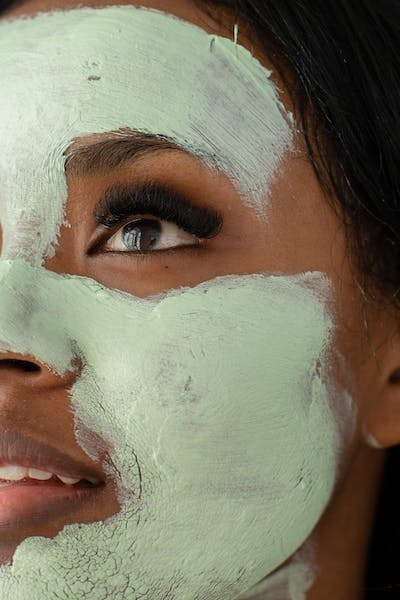
2 notes
·
View notes
Text
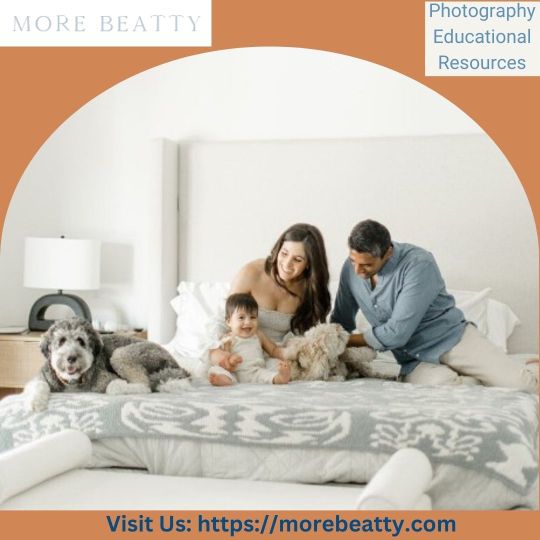
Essential photography educational resources for every photographer
Unlock your creative potential with a variety of photography educational resources designed for photographers of all levels. From online courses and workshops to eBooks and tutorials, these resources will enhance your skills, inspire your artistry, and help you capture stunning images with confidence.
0 notes
Text
Mastering Photography with YouTube: A Guide to Learning Through Videos
Introduction In the digital age, photography has become more accessible than ever before. Whether you’re using a smartphone or a professional camera, the desire to capture stunning images is universal. One of the most effective and accessible ways to learn photography is through YouTube. This platform hosts a wealth of tutorials, reviews, and tips that cater to all levels, from beginners to…
#A Guide to Learning Through Videos#Beginner Photography#BeginnerPhotography#Camera Techniques#CameraTips#Creative Photography#CreativePhotography#Digital photography#LearnPhotography#Mastering Photography#Mastering Photography with YouTube#Online Education#Photography Tips#Photography Tutorials#PhotographyCourses#PhotographyGuides#PhotographyHacks#PhotographyTechniques#PhotographyTips#PhotoSkills. VideoTutorials#technique#tips#Tips and Techniques#Visual Learning#Youtube#YouTube Learning#YouTubeLearning. PhotoEditing#YouTubePhotography#YouTubeTutorials
0 notes
Text
Cat Photography: Pet Photography Tips and Camera Settings for Better Cat Portraits
‘Until one has loved an animal, a part of one’s soul remains unawakened’ ~ Anatole France They say, the experience of loving and caring for an animal awakens a deep and essential part of our being, enriching our lives in ways that are difficult to describe. I didn’t realise this until I met my friend’s pet, the cute kitten ‘Cheeku’! Pets are great companions with whom we can converse and share…
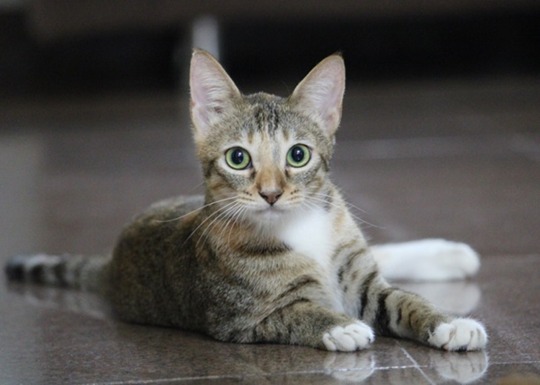
View On WordPress
#cat photography#DSLR photography for beginners#DSLR photography tutorials#learn photography#pet photography#pet photography camera settings#pet photography tips#Photography#photography for beginners#photography tutorials
1 note
·
View note
Text
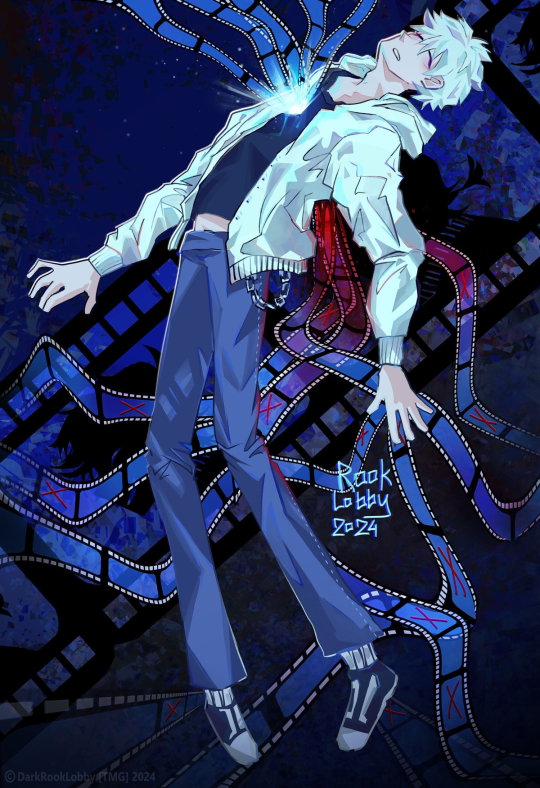
📸🎞️✂️
✨✌🏻~Hi Link Click fandom! 🙃✨
Sooo I was planning to just study the show's artstyle after finding a cool tutorial on youtube but it suddenly evolved into this artwork. Now I can angst about the future season & the fact that time travel is depressing 💙
(Also I wanted LG's clothes to be less boring so I tweaked them a little 🙃 Totally not because I forgot lol)
(tutorial from yt here 🥰)
#link click#shiguang daili ren#shiguang dailiren#lu guang#cheng xiaoshi#donghua#lg#cxs#link click fanart#yingdu chapter#hopefully released soon! lol#film#film photography#frame#photo#fanart#rook lobby#dark rook lobby#2024#digital art#illustration#tutorial#art tutorial#used a tutorial from youtubeeee#guide#time travel#ok so despite the fact cheng xiaoshi is in the background only#shiguang#:3#sgdlr
252 notes
·
View notes
Text
RESOURCES FOR BOARD ORGANIZATION AND SEARCHING IMAGES & REFERENCES
Pinterest (Saves every image in different Boards)

Milanote (Able to search your own board and organize notes and sections. For every Project you have in mind.) Literally, you can do a crime board.

UNSPLASH

PIXABAY

Public Work by Cosmos

SAME.ENERGY

Designspiration

#reference#tutorial#art reference#art#poses#artist#art resources#resources#web#pages#help#guide#action#line#figure#animation#photography#3d model#boards#pinterest#milanote#organization
105 notes
·
View notes
Text
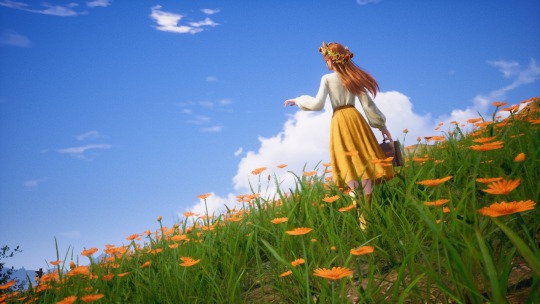
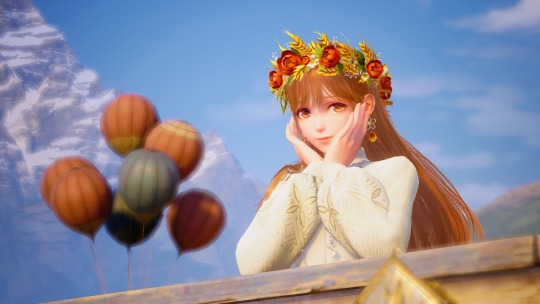
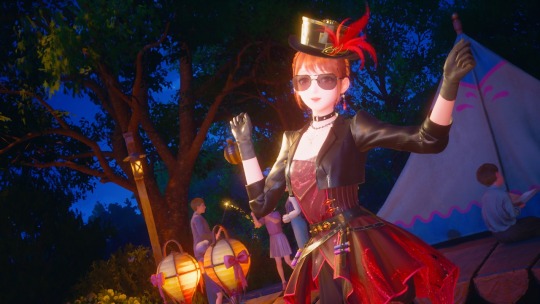
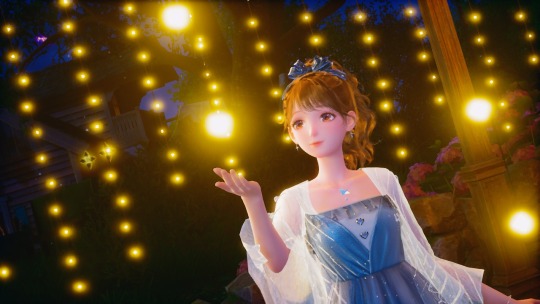
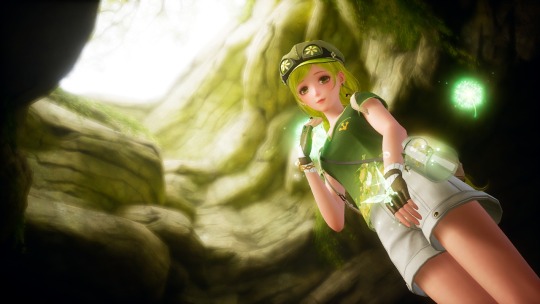
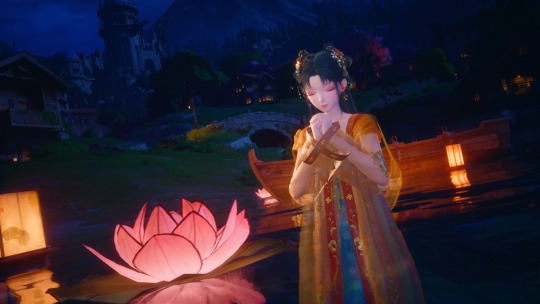
Some new pictures I took on Infinity Nikki!
#infinity nikki#digital photography#??#I saw a tutorial by a profesional photographer and I think I have improved a bit on the composition of these XD
95 notes
·
View notes
Text

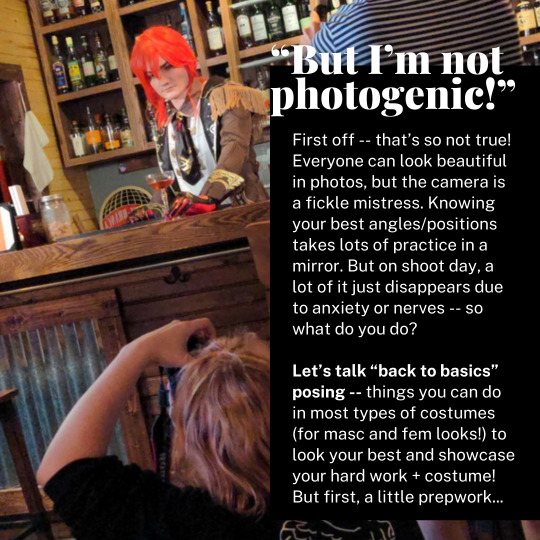
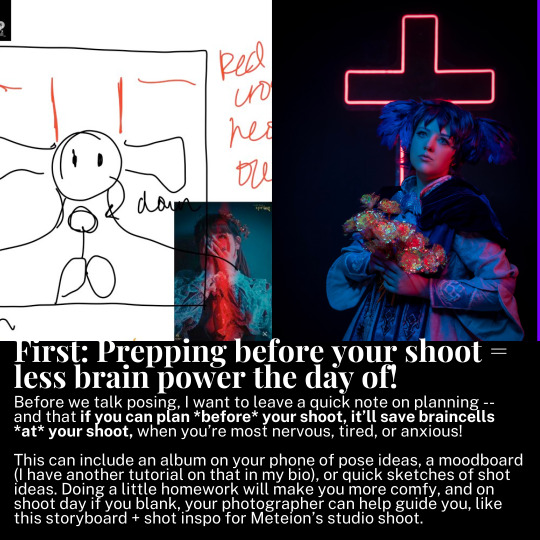
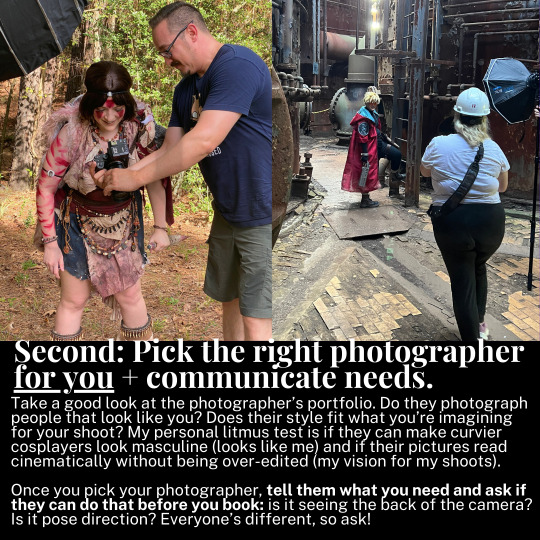

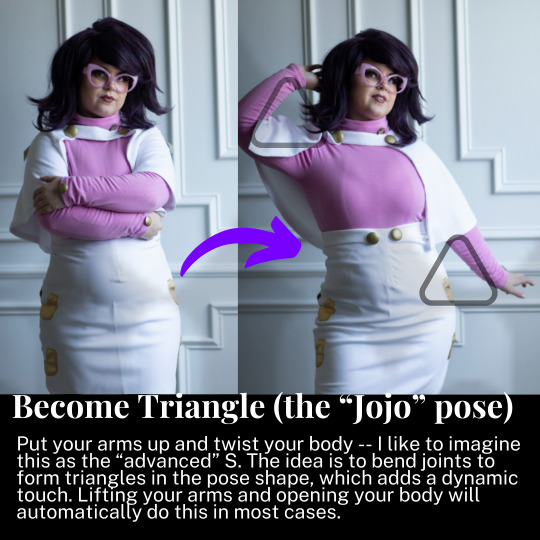

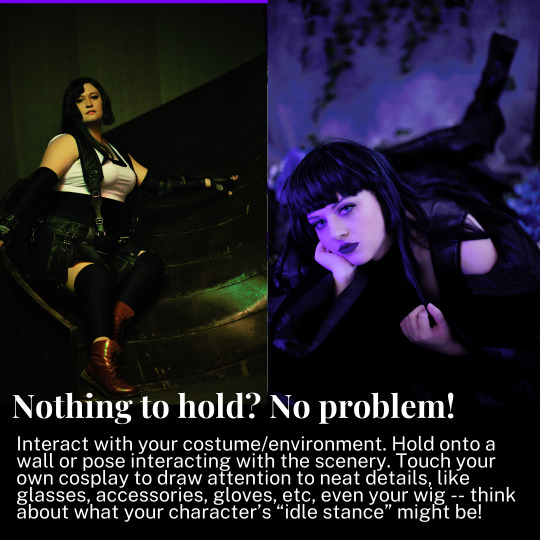
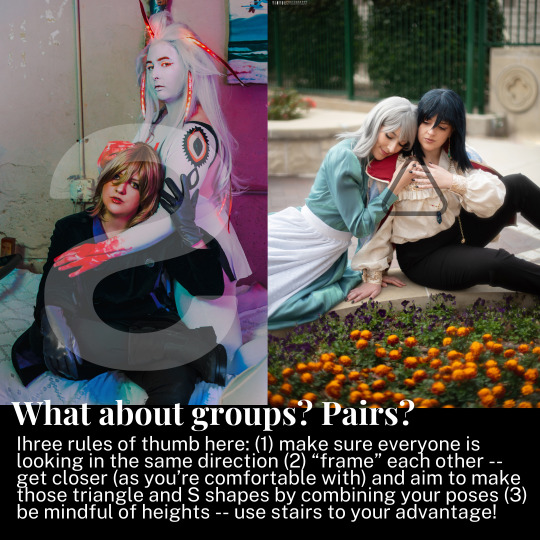
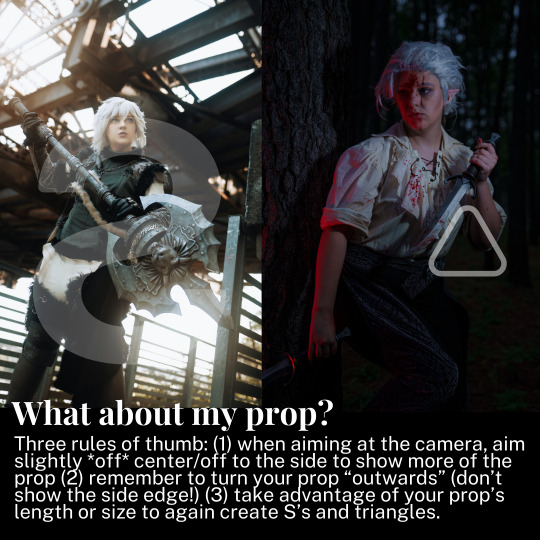
A cosplay tutorial on how to pose for photoshoots, no matter what you look like and what you're wearing -- with example shots to help guide you along.
286 notes
·
View notes
Text
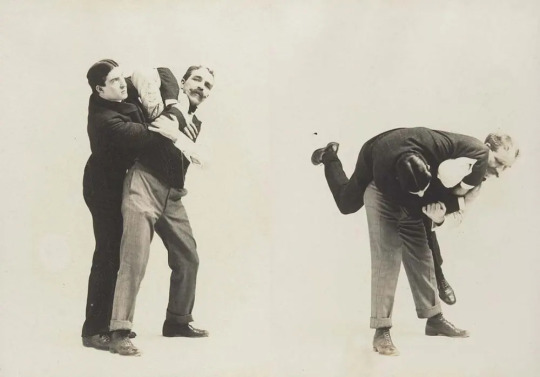
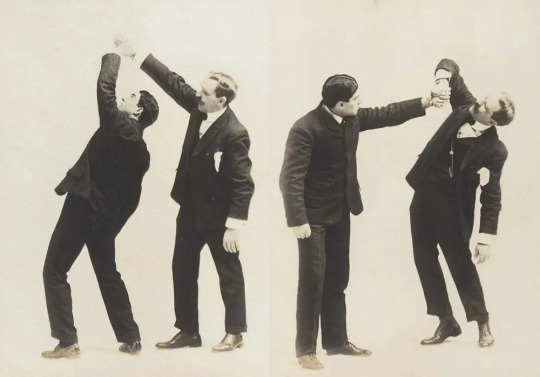
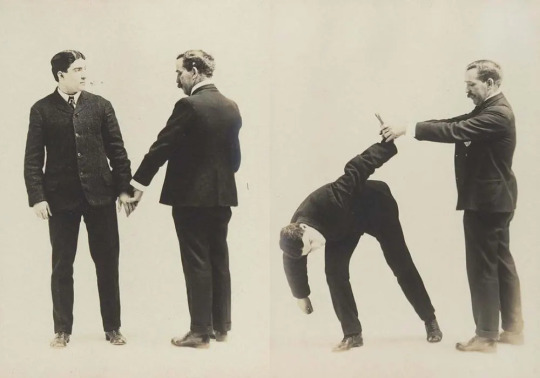

Victorian-era photo album offers a gentleman's guide to self-defense maneuvers. [1895]
172 notes
·
View notes
Text
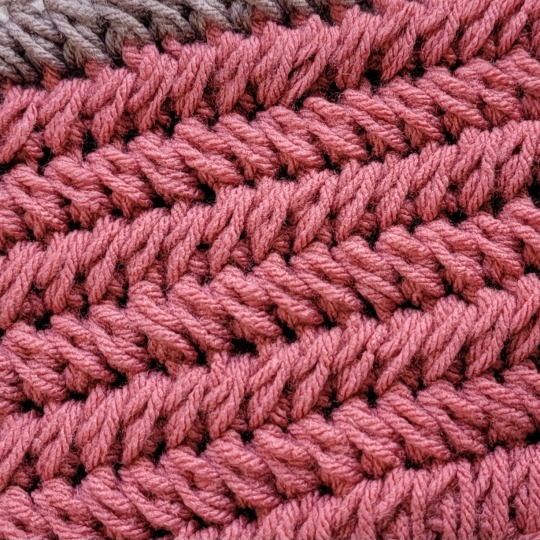
Full step by step photo tutorial on the crochet Fishbone Stitch is up on my blog! Link in my profile! 🐟🙌😊
Check out this playlist featuring more Textured Stitches here!
#yarn#art#crocheterofinstagram#crochet#crocheting#crocheted#youtubers#youtube#phototutorial#photography#crochettutorial#crochettutorials#diy#howtocrochet#beautiful#craft#crafting#crafty#tutorials#tutorial#patterns#love#crochetstitch#crochetstitches#yarnaddict#crochetaddicted#instamood#crochetcreations#photo#handmade
39 notes
·
View notes
Text

Jedi Survivor Photomode Tips: Portrait Lighting!
There are four lighting features that impact Survivor’s photomode: the environmental light, Cal's lightsaber, the exposure slider, and the three spotlights. Let's use them all 🔆
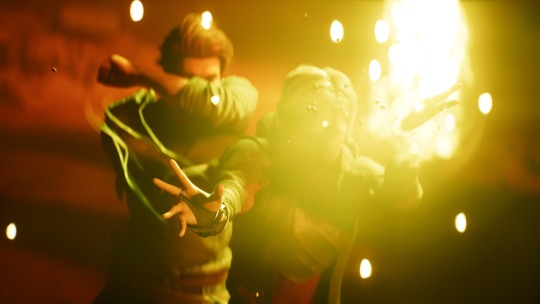
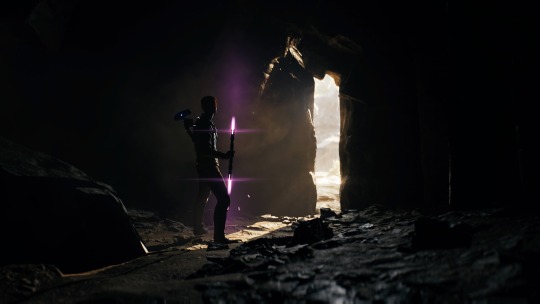
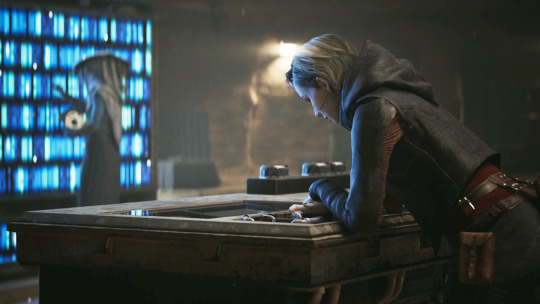
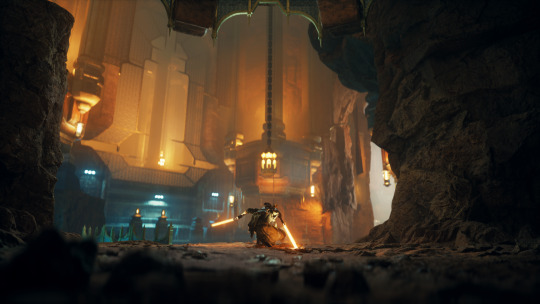
Environment
The environment/lighting teams at Respawn have designed incredible locations across all these different Star Wars planets. Pay attention to how the already-placed lights impact your portrait: I have a running shortlist of favorite locations that I often go back to when creating a specific look.
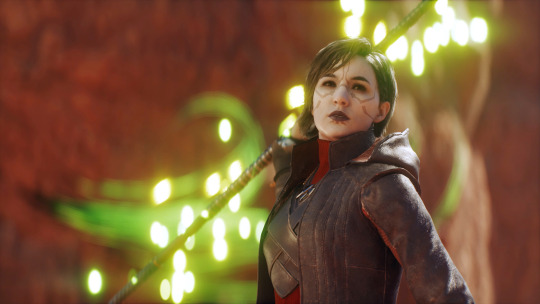

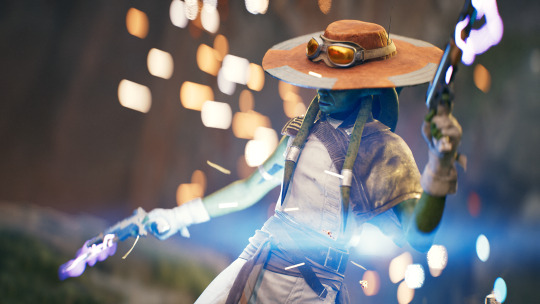
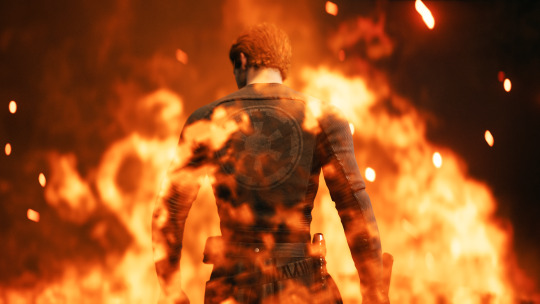
Environmental lighting also includes effects like fire particles, weapons, Merrin’s magick, etc. If you get your timing right, these can add extra color and visual interest to your photo.
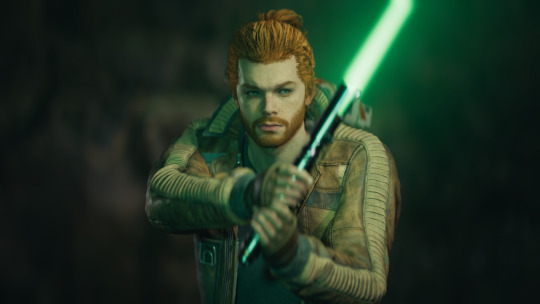
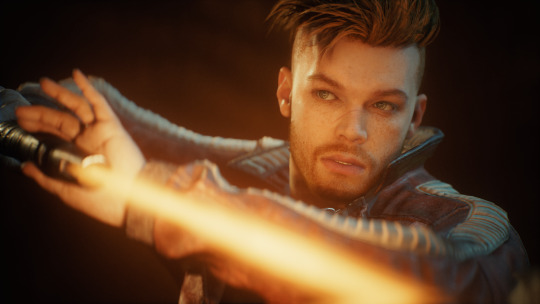
Lightsaber
Cal’s lightsaber! It’s made of light! While everyone has their own color preferences (ginger saber supremacy) keep your color choice in mind when using the saber as a key light.
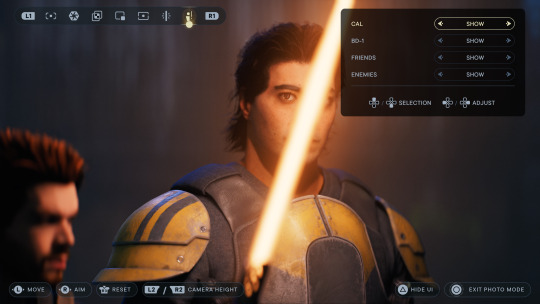
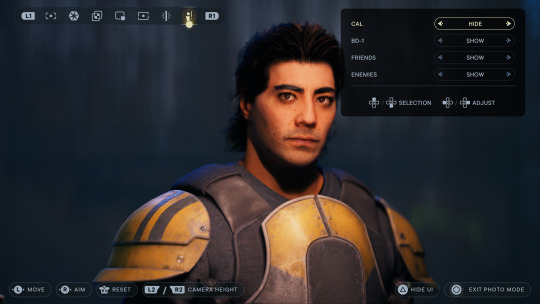
Bonus tip: Cal’s saber can also be used to help light NPCs 👀 Photomode allows you to toggle Cal’s visibility on and off, but the ambient glow from the saber will remain. It’s pretty easy to tell when I’m using this trick: just look for a bar-shaped catchlight in the character’s eyes.
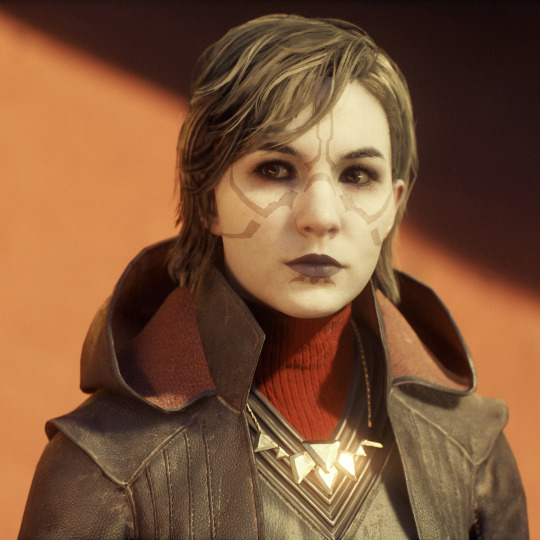
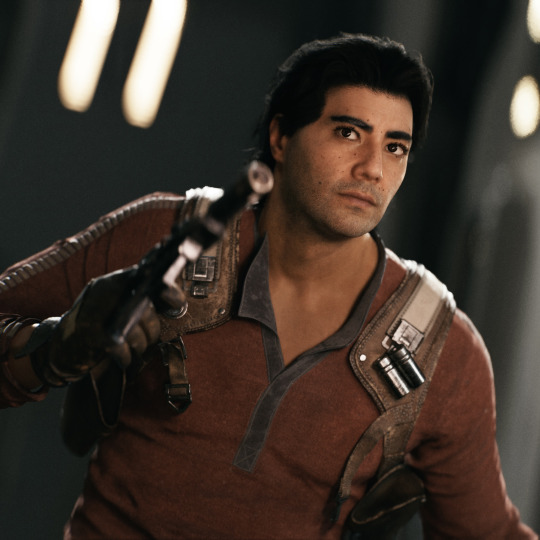
Speaking of catchlights - they’re a great way to add life to your portrait. If the environmental light doesn’t hit the character’s eyes, I’ll often use the first spotlight as a key (main) light to try and create that reflection.
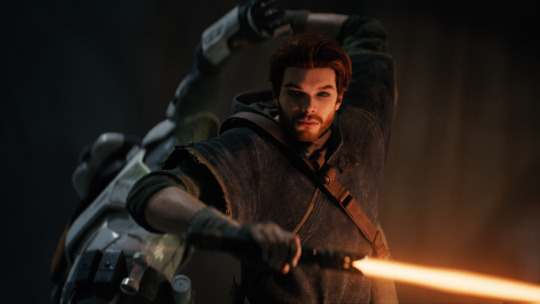
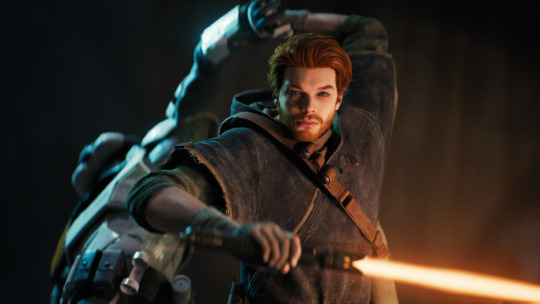
Spotlights
I’m often using spotlights in two ways, either intensifying the environmental light or pushing the image with stylized lighting. The first creates more interaction between the character and their surroundings, while the second adds drama and visual interest. My favorite portraits are often a mix of both.
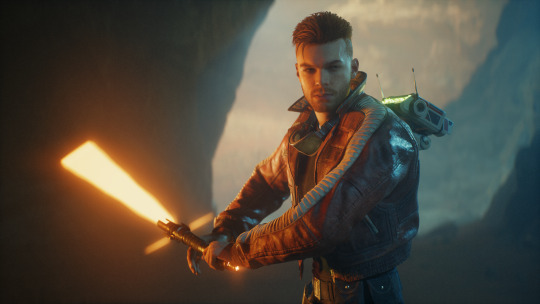
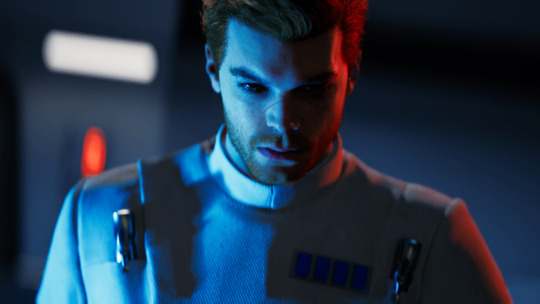
Here’s a breakdown from a recent photo: the unlit photo (1), a yellow spotlight as a key (2), a red rim light that connects to the neon sign in the background (3), a green rim light for stylization and repeating color (4), and the final image (5)
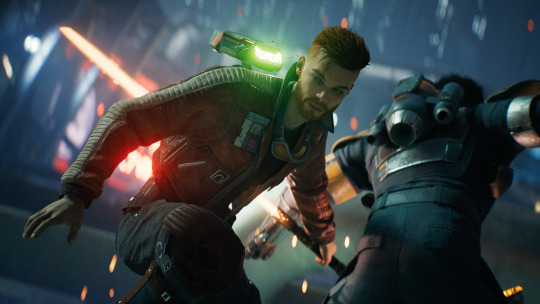
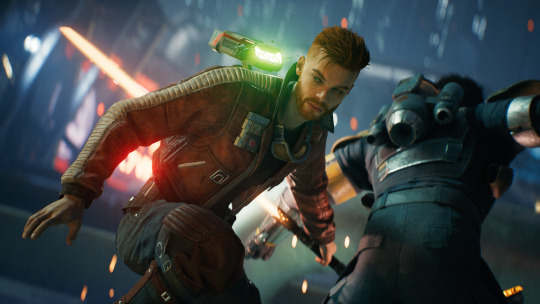
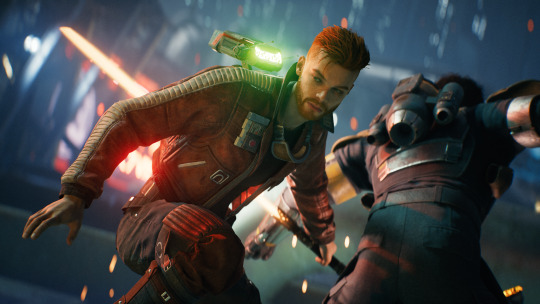
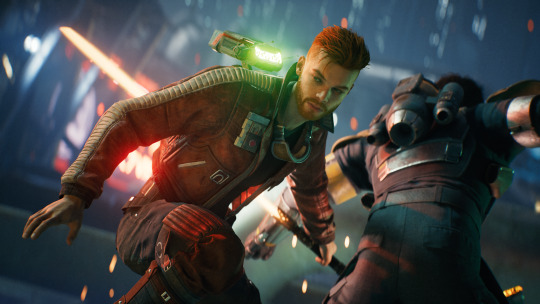

Other spotlight tips: play with moving them closer/further away from your subject, along with the intensity of the light itself. Some colors (white, yellow) are more powerful than others (red, blue). If I can’t get the color I want from one light, I’ll place two in the same location and drop the intensity to blend them - blue and green make turquoise!
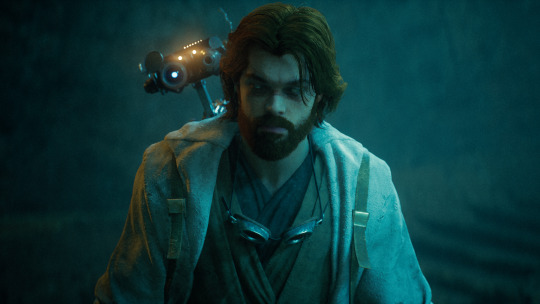
If you want to be a nerd like me (though I'm in this industry so it's kind of my job) study lighting that’s used in real life portraiture and cinematography. Techniques like short lighting, three point lighting, butterfly lighting, etc.
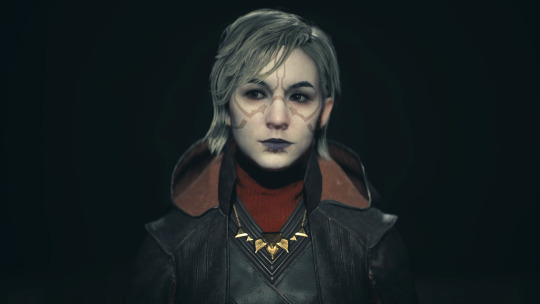
Exposure Slider
The exposure slider in photomode is a helpful option when the entire scene is darker/brighter than you’d like. It’s also a good way to isolate your subject from the background: drop the exposure down, then use spotlights to add light back to your subject. Note that the spotlight brightness is impacted by the exposure as well, so you’ll need to crank the spotlights up to compensate.
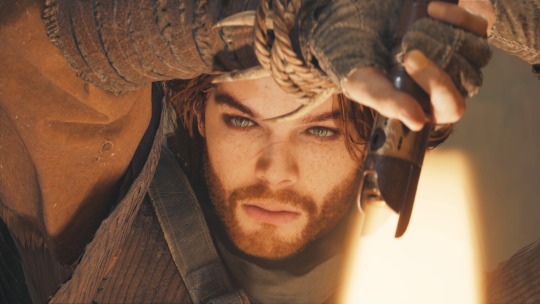
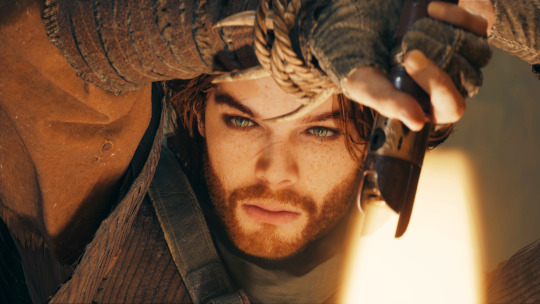
Photo editing
Survivor’s visuals have a beautiful dynamic range and photomode does a great job protecting its highlights and shadows, though that often means less contrast. So if it’s a favorite portrait, I’ll add some contrast back in and often push complementary color into the shadows (yay color theory!)
--
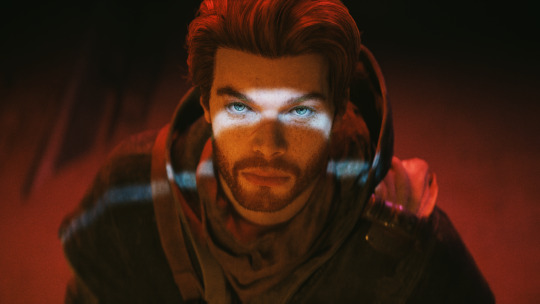
So I've been slowly writing notes for a full-fledged video tutorial and wanted to try a thread-style post in the meantime. Lighting is such an important part of photography, both IRL and virtual, but it's not the easiest tool to use. This is more theory than a practical how-to, but hopefully some of it is helpful?
If you made it all the way down here, you get... a turbo dog or something. Two turbo dogs! 🌭
#star wars jedi survivor#jedi survivor#cal kestis#photomode#virtual photography#star wars#jen makes jedi tutorials
112 notes
·
View notes
Text
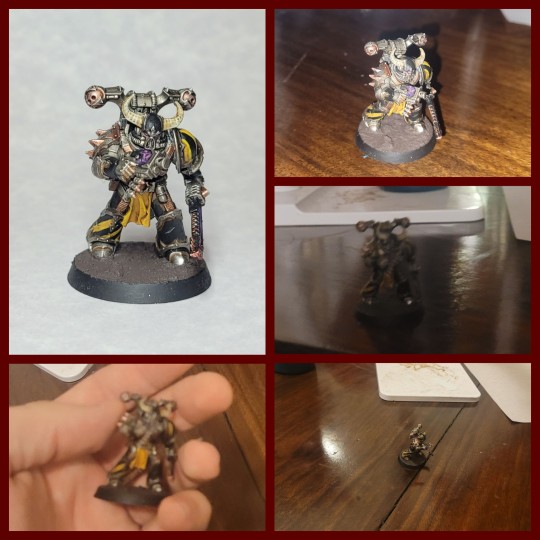
How To: Basic Model Photography
Far too often I see folks post their newly painted minis online only to fumble at the last hurdle with a poor picture. It doesn't matter how good a painter you are, a bad photo can ruin any model. While you can invest in an expensive light box and a purpose-made camera, there are some things you can do to get at least quality photographs with a phone camera and some items from around the house.
Light
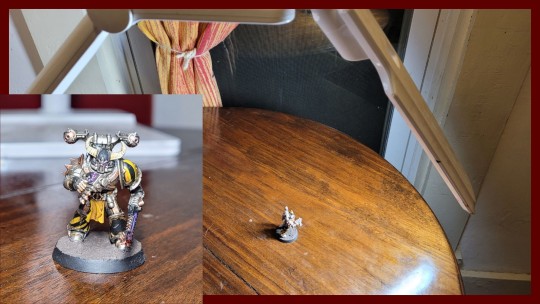
You want as much ambient light as possible plus some extra sources to account for the scale of the minis. If you have a room with big windows and the sun isn't directly blasting through them, that's great. If not then a reasonably bright overhead room light will work too. I also use an articulated LED desk lamp as a more controlled source to light the miniature from the front and illuminate details that an overhead source might cast into shadow.
Background
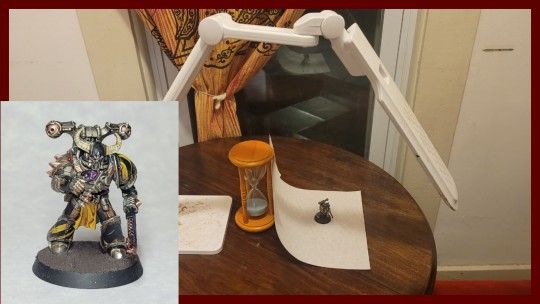
Try to get some sort of flat color backdrop to photograph your minis against. The easiest method I've found is to get a sheet of paper, I use some lightly colored and textured parchment paper, and then prop that up against something sturdy to make a gentle curve before setting your mini on it. Neoprene warhammer play mats or paper battletech maps can also work great for this if you do want a more thematic background to match your game of choice. This not only makes the model stand out more without visual noise in the background, it helps control your lighting and gives your camera an easier target to focus on.
Stability and Camera Distance
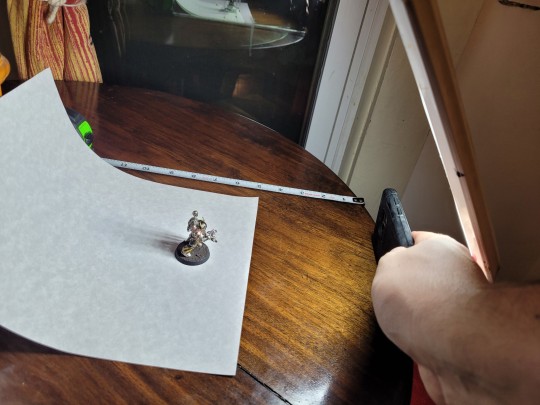
Your weak, fleshy meat hands might seem kinda steady but for the purposes of doing very scuffed macro photography they almost certainly aren't, so you’re gonna want some form of mechanical stabilization for your camera. A tripod is great for this, but if you don't have one then you can just prop your phone up on whatever surfsce you're taking the photos on.
You'll also want to play with how far the camera should be from the model for the best picture- I find that about 6-8 inches works best for my Galaxy 20 but your mileage may vary depending on what hardware you use.
Angles

Because a photo is a static 2d representation of a 3d object, the angle you take a photograph at relative to the model will chance which details are most visible and how the pose is read by the viewer. Think about how you want your finished piece to look like and consider taking a couple of protos with different angles and poses tonsee what works best.
Cropping
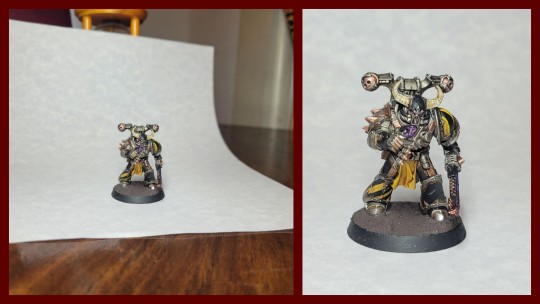
A teeny tiny mini in the middle of a big wide photo means anyone who wants to look closely at the details needs to zoom in on it, and most people won't do that! Once you've taken your photo, crop it down so that the miniature is filling the frame.
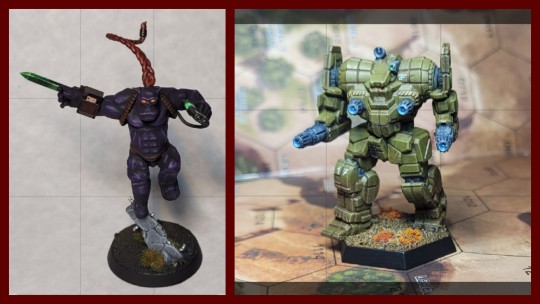
You could also consider the Rule of Thirds- most photo editing software will give you pairs of vertical and horizonal lines that divide an image into 9 segments, framing your subject in the photo so that it ends up falling along or framed by those lines can give you a guideline to easily produce a well composed photo.
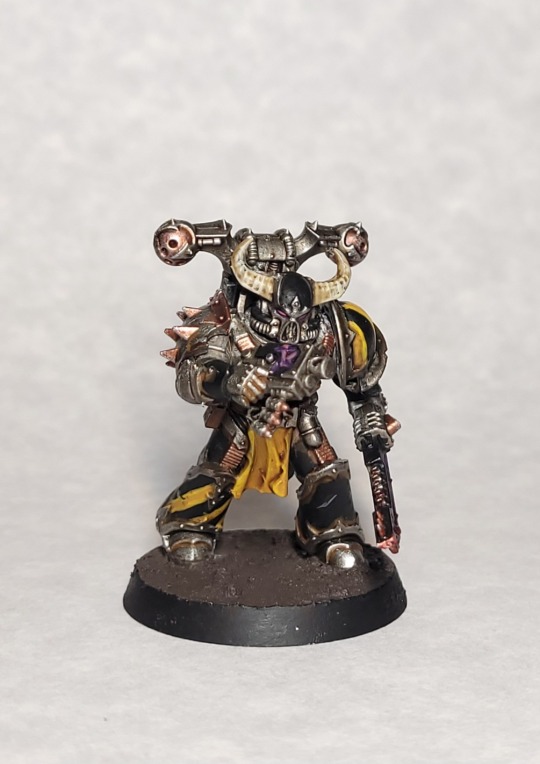
Hopefully these tips help you take better photos of your models! It does take a few extra minutes compared to just snapping a quick photo off the paint betch but the extra effort is absolutely worth the results in my opinion
#hobby#miniatures#mini painting#battletech#warhammer#warhammer 40k#age of sigmar#bolt action#infinity#tutorials#mini photography
35 notes
·
View notes
Text
Finding Cosplay Photoshoot Locations: Part 1

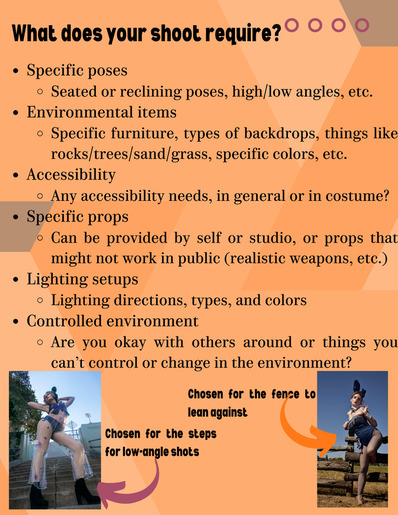

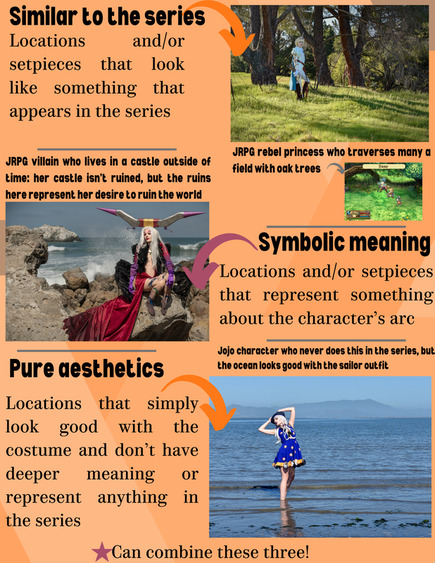
📸Want to do cosplay photoshoots but don't know how to find that perfect place to shoot? This tutorial covers how to brainstorm a location for your shoot, logistical and cost concerns with shoot locations, and how to actually find your dream location.
📸This tutorial can be applied to shoots of all types, including but not limited to self shoots, shoots with friends, and shoots with hired photographers. Self shooting or shooting with friends only requires a camera (a phone works!) and possibly a tripod.
Part 1: Location Types
Coming up with the general type of location you want requires some brainstorming about what you want from the shoot. Think about your specific goals and types of photos you want and how certain types of locations would work for your goal. Remember you can always do multiple shoots for the same costume with different concepts!
For example, if you want big, sweeping shots, you will need a location that allows for wider framing and still looks good, while if you are primarily after shots with closer framing, you can go with a location with only a small usable portion. If you are looking to primarily showcase the costume itself or your posing, a flatter and simpler background works better than a busy background, but if you want cinematic shots or shots where you are existing in the environment as the character, somewhere that can show off the location itself as well as how you exist in it would work better.
Types of Locations
There are three main types of locations for cosplay shoots in relation to the cosplay itself. Of course, you can combine these types and there is a lot of overlap, but thinking of these three location types will help you conceptualize your shoot.
The first type is locations that are similar to something in the series, or an exact location from the series. My cover image is an example of this, where I took photos at the location of the climactic battle of the manga. Most fictional locations don't exist in real life so exactly, however, so think of locations that look similar to where this character might be found. The example on this slide shows a cosplay at a nature preserve with grassy fields and oak trees, which is similar to the locations the character traverses several times throughout the game she is from. This category can also include locations with similar vibes, such as a studio made up to look like a fancy European castle for a character from a series about European royalty, or a shoji screen backdrop for a character who lives in a Japanese-style house.
The second location type is locations with symbolic meaning. These locations showcase something about the themes or character arcs present in the series, and this can be accomplished with anything from specific props and setpieces to the entire background. One shoot I'd love to do with this concept is of Lady Blackpearl staring into a mirror -- this would symbolize her dual personality nature -- or of Lady Oscar wrapped in thorns, with the rose thorns symbolizing her glorious but fragile life. I chose to represent this location type with Ultimecia, a sorceress who wants to compress time so she is the only one who can live in the combined past/present/future, set among ruins. The ruins aren't accurate to the game, but show her crumbling reign marked by the passage of time.
The third location type is locations chosen for pure aesthetics. Obviously all locations are chosen for aesthetics, but these are locations with no deeper meaning and may not represent anything from the series at all. These can range from a simple colored wall backdrop to a sweeping landscape that simply looks good with the colors of the costume. Some examples are the Yasuho Hirose ocean shoot on the slide, where it doesn't represent a particular scene or location in the series but simply looks good with the cut and colors of the costume and the sailor theming, or my Princess White Rose milk bath photoshoot, where again the character never takes a milk bath, but a bathtub full of milk and roses shows off the detail of her floral hat and showcases the opulent nature of a rose-themed princess.
Requirements of your Shoot
Once you have a general concept, think of what is required to fit that concept. This can be as general as specific backgrounds or types of backgrounds to as specific as particular items at the location or particular lighting setups. Some shoots might need specific props, such as furniture to sit or lounge on, and props that won't work in a public location, such as realistic weapons that may cause panic or worse. Also keep in mind any accessibility needs, whether it is an accessible location in general to accommodate a disability or a need that is caused by the costume itself. Check not just the specific area you want to shoot, but how to get there from the parking lot or transit stop. Finally, keep in mind that unsecured outdoor locations, such as a park or beach, are locations where you can't change things about the location and you may encounter other people. Discussion of how to be respectful of such locations is in part 5.
Stay tuned for the rest of the parts~!
Links to other parts: 1 Location Types, 2 Discovering Locations, 3 Indoor vs Outdoor Locations, 4 Location Permissions, 5 Location Logistics
128 notes
·
View notes
Text
youtube
I finally bothered to learn how to use hotsampling with the IGCS client! I made a tutorial for anyone who's interested :3
#bg3#bg3 virtual photography#virtual photography#otis inf#igcs#baldur's gate 3#bg3 photography#bg3 photomode#bg3 tutorial#bg3 modding#bg3 mods#Youtube
63 notes
·
View notes
Text
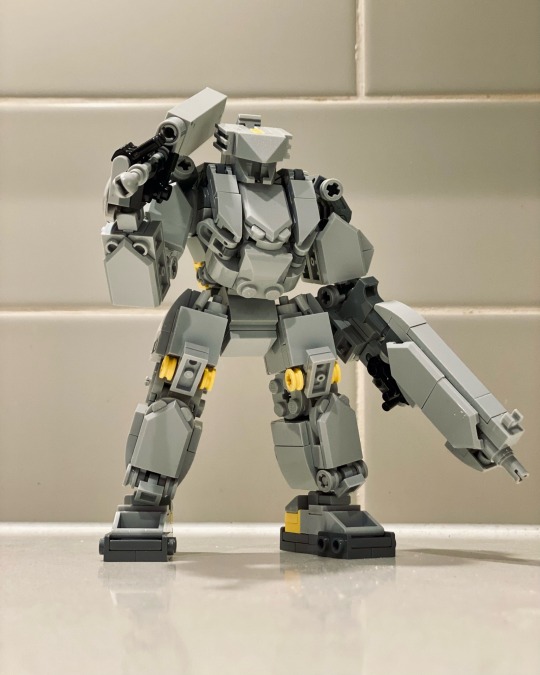
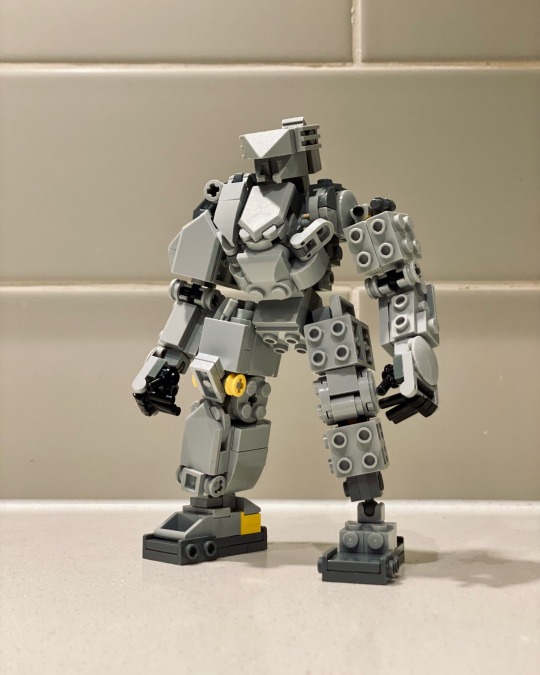
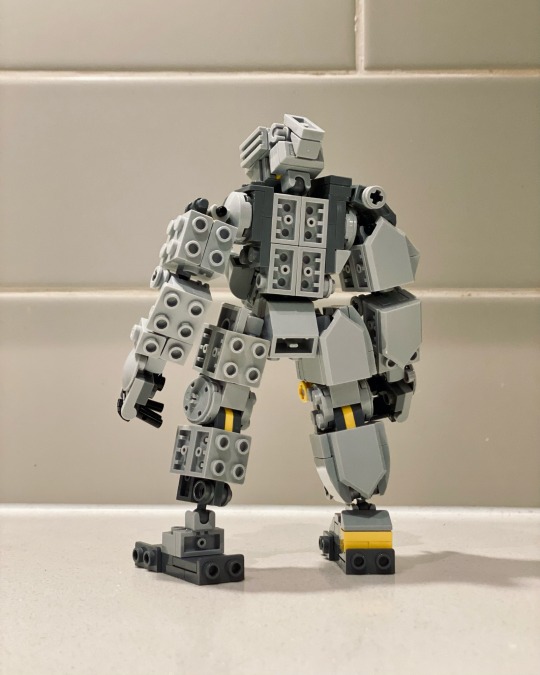
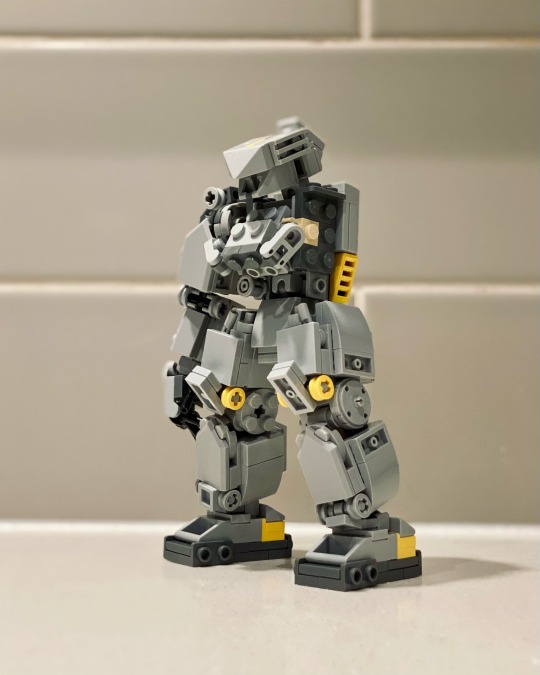
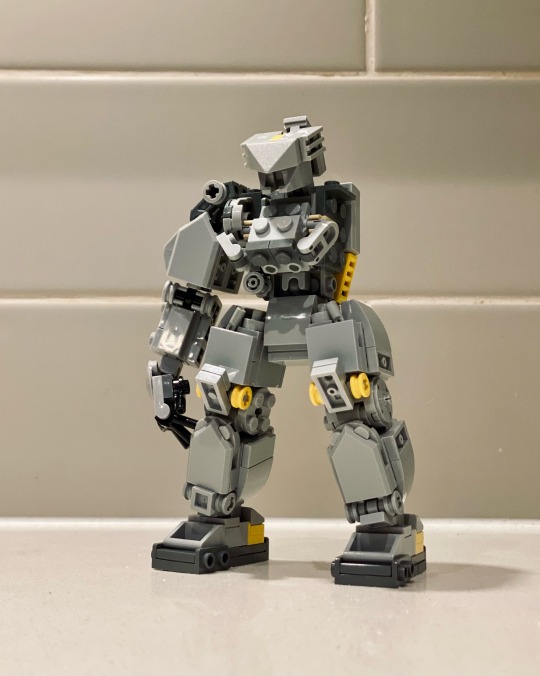
<Altas Frame>
Here comes the frame for all Type Atlas Units, while there are minor differences between each of them but not too far away from this basic assembles.
Please watch tutorial videos in my YouTube channel to discover the pieces I use and step by step building process for this MOC.
#afol#afolcommunity#lego#lego mecha#lego moc#lego builds#lego photography#lego robot#legomania#Lego tutorial#Lego frame
71 notes
·
View notes
Note
Do you have any tips for taking photos of physical objects? I like making things, but taking photos of them is the worst :(
Sure! I also struggle with taking pictures of stuff, but I can give you two big suggestions (and I'll try to keep my explanation brief for now, but you are always welcome to come back and ask for clarification!). As always, these suggestions are not rules, so if it goes against what you know or have been taught or what works best for you, feel free to disregard it lol.
Lighting, and set-up (which I will roll camera angle into).
You don't need anything big and fancy to take nice pictures of what you make. You don't need a big DSLR camera or box lights or a crazy image processing program. You can take great pictures of your stuff right at home with things you already have. I know a lot of potters who take decent pictures of their work in a corner of their living room with a simple paper sweep (poster board), one directional light (one guy I know even uses just a lamp and points it towards his pots), and something to take pictures with whether that's your phone or a little point and shoot.
Lighting. A good rule of thumb is to not back-light your work as your primary light source*. Make sure your primary light source is in front and pointing at the thing you're trying to photograph. You can even kick it off to the side for a nice three-quarters effect! You CAN have some back-lighting as long as is is acting as your fill (secondary light source) OR if you're shooting outdoors. If you want to go for natural lighting, gray days are actually quite nice as they offer even lighting (though if you want that bright sun, go for it!). *That is not to say back-lit things are bad, just that they aren't necessarily going to show off your work unless it's designed to be that way.
Set-up. This can be as simple or as complex as you want it to be! Figure out how you want to shoot your work, and then figure out how to light the space. If you want something clean, create a light box. Use a box with a white/light gray sheet draped inside to make a contained space, or pick a corner of a room and either drape a sheet or use some poster board to make a little box you can easily put up and take down. If you want something that's more set up, I have actually used my work space as my backdrop. Show the tools you are using, maybe some material, and build a composition around your piece! That takes a little more effort but can be quite nice.
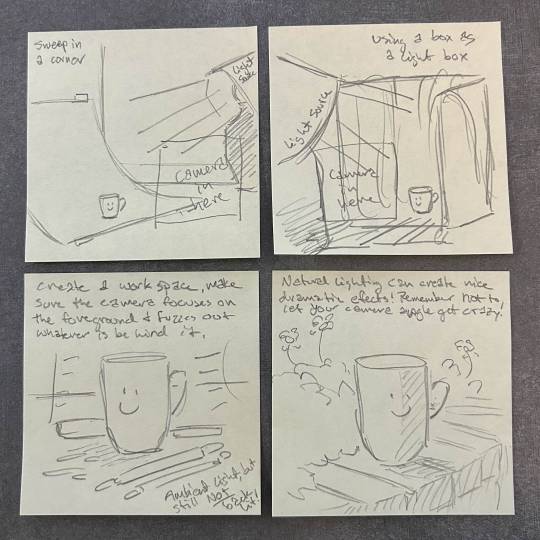
As for taking the actual picture, I have found that I personally like to have it slightly up at a shallow angle so it's not straight on or too high looking down on the piece. You can easily create an unflattering angle, but there are little nuances to taking pictures of those more extreme angles. It's just not what I'm interested in lol. Have your piece nice and centered at the angle you like, and make sure the camera is focusing on your work as much as possible and not the surrounding environment (I won't get into depth of field and all that, but that's worth keeping in mind). You can do that with some simple settings our technology has these days! (Also side note: if you are using your phone, clean the camera lens on your shirt first. It's crazy how easily that little thing can get dirty and give you smudgy looking photos lol)
I'll stop myself there, but hopefully these suggestions can help you feel more confident in taking pictures of your work! As always, feel free to ask more questions if you have any.
#ask me stuff!#arting#yes this was my brief explanation im sorry lmao#photography#i do a lot of product photography at work so i have a lot of practice#so like#take lots of pictures#try different things#look up tutorials on youtube and stuff#ive taken a LOT of bad pictures to get to where i am lol so dont be afraid to take those bad shots#i am very against gate keeping skills so like#please feel free to ask questions#and if i dont know the answer ill try to point you in the right direction
22 notes
·
View notes